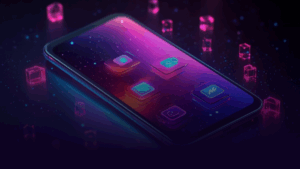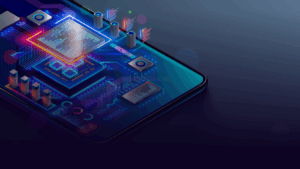Companies like Netflix and Amazon have set high standards for engagement and personalization by using behavior, data, and technology to tailor services to users’ interests. Consumers, in comparison, expect companies to understand and anticipate their needs, and to deliver the content and products they want. Never has customer experience been more important.
Yet, if a customer currently experiences an issue with their device, most Telco care solutions simply do not work. Even if customers know where to go and which applications to download, most solutions still fall short of empowering them to identify and resolve issues on their own.
Recent research shows that, on average, one-in-five customers will face a device-related issue annually. For operators, this represents a significant opportunity, with every support request being a vital touchpoint that can enhance loyalty.
However, the reality is that device care is painful for many customers, given the significant friction throughout the process. A 19-point drop in net promoter score [1] results from going through any device-related issue. When the issue remains unresolved, the score plummets by 36 points [2].
Existing troubleshooting tools are difficult to use
Many existing digital care tools are difficult to use and ineffective. Self-service issue troubleshooting products often include tutorials with static scripts that lack specific insight or real-time data from the device being tested. To get anywhere close to understanding if the device has an issue, users often are required to perform a series of standard tests with little insight into their purpose or efficacy.
Transforming device care through gamification
Thanks to gamification, device diagnostic assessment is undergoing a transformation.
By integrating game mechanics into hardware diagnostic testing, device troubleshooting is improving the resolution rate for hundreds of potential issues by simplifying the process and making diagnostic troubleshooting more intuitive and accessible.
One solution for all users
Understanding how different customer demographics interact with technology is crucial for mobile operators aiming to deliver quick, effective resolutions to device issues. Digital natives expect quick, engaging online interactions with immediate results, while those less acquainted with digital tools require more guided, straightforward experiences.
Enter gamification. Through solutions that incorporate game elements, operators can simplify diagnostic testing for inexperienced users while enhancing engagement for experienced users. Gamification helps both groups identify and resolve real-world device-related issues more quickly and effectively.
For instance, a “game-like” experience guides the user through a series of diagnostic steps, each step represented as a “challenge” or “level” that the user must complete. This improves the success rate of diagnostic testing across various devices, manufacturers, and operating systems, and importantly, for all user types. Gamification not only makes the diagnostic process more engaging but also ensures more reliable results, enabling operators to tailor more effective solutions to consumer problems.
Enter Automation: The Supercharger for Gamification
While gamification significantly enhances customer engagement, it is only part of the solution. The optimal blend of engaging gamification and efficient automation is what becomes critical for fast and effective issue resolution.
Gamification boosts engagement by making interactions fun. By cleverly incorporating gamification at points in the customer journey that often coincide with potential frustration or trust issues – like troubleshooting – automation simplifies processes, minimizing the cognitive effort or trust required from users to resolve their issues. By striking the right balance, operators can make understanding and solving complex hardware issues less overwhelming.
Gamification is not just for solving issues. It can prevent them too
When adopted by Telcos, game centers can transform routine device maintenance into a repeatable experience. By offering rewards such as discounts, additional tangible products, or exclusive services in exchange for regular device check-ups and optimizations, game centers encourage consistent user engagement.
Incorporating elements like levels, achievements, social scoreboards, and in-game currency motivates customers to regularly perform activities that prolong their device’s health. Interactive challenges that educate and reinforce device maintenance behaviors ensure effective participation, rewarded through ongoing engagement. As users progress, they unlock higher levels of rewards, fostering a cycle of continuous care and interaction. This proactive approach not only enhances the customer experience but also reduces the frequency of device-related issues, boosting customer loyalty and maintaining a healthier device ecosystem. Indeed, 72% of customers report that gamification increases their engagement, underscoring the effectiveness of this strategy [2].
Gamification: a proven strategy for customer engagement
With 70% of Global 2000 companies already utilizing gamification in some capacity, this strategy is proving increasingly valuable. By 2025, the gamified learning market is projected to reach $25.7 billion, while global gamification sales revenue is expected to hit $32 billion [2]. Moreover, considering that over half of American households own at least one gaming device [3], many customers are already familiar with game mechanics, making them more receptive to gamified experiences in customer service.
Case Study: Vodafone Portugal’s Gamification Success
Following a successful proof-of-concept, Vodafone’s implementation of a comprehensive gamification solution across its Portuguese contact centers is a key example of the strategy’s effectiveness. The platform deployed by Vodafone, featuring points systems, badges, tiered rewards, and loyalty programs, personalized and enhanced customer interactions. This initiative significantly improved customer retention, elevated satisfaction levels, and gave Vodafone a competitive advantage in the market.
Vodafone’s experience highlights the effectiveness of gamification in telecommunications, showing how integrating game-like mechanics into customer service can deepen engagement, boost loyalty, and drive better business outcomes. [4]
Conclusion
For operators, the key to successful scaling is selecting the right partner with a proven understanding of customer behavior, access to historic device data on which to map solutions, and an understanding of how to correctly deploy technology and automation at scale.
With the right solution, results can be realized quickly. By integrating game-like mechanics into non-game contexts, Telcos can streamline the device care process into an interactive and user-friendly experience for consumers, with an app alone deflecting more than 30 percent of device issue-related calls while boosting net promoter score by at least 11 points.
Get in contact with us to learn more about how, through gamification and automation, MCE can set you apart from the competition by Mobilizing better Customer Experiences.

Sources
[1] MCE 2024 Topline Report. (2023, February). Telco NPS is at Risk During the Smartphone Lifecycle.https://mcestage.wpengine.com/insights/mce-2023-topline-report-telco-nps-is-at-risk-during-smartphone-lifecycle/ [2] Zippia. (2023, February). 25 Gamification Statistics [2023]: Facts + Trends You Need To Know.https://www.zippia.com/advice/gamification-statistics/ [3] PR Newswire. (2023, May). CTA Study: Smartphones Most Owned Tech; 5G and Wireless Drive Adoption.https://www.prnewswire.com/news-releases/cta-study-smartphones-most-owned-tech-5g-and-wireless-drive-adoption-301838900.html [4] Collab. (n.d.). Case study: Vodafone gamification.https://collab.com/case-study-vodafone-gamification/



